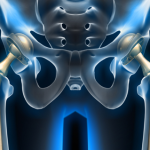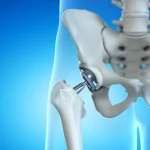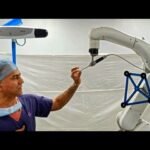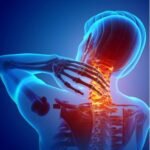Introduction
In the intricate framework of the human body, bones form the foundation that provides structure, support, and protection. Unfortunately, as we age, the strength and integrity of our bones can diminish, leading to conditions like osteoporosis and a higher susceptibility to fractures. Recognizing the Signs of Weak Bones is crucial for early intervention and proactive measures to preserve bone health. In this comprehensive guide, we will delve into the various subtle and not-so-subtle signs that your bones might be losing their strength.
• Fracture Susceptibility: A Red Flag
The most overt signs of weak bones are experiencing fractures from seemingly innocuous incidents, such as a gentle bump or a minor fall. Bones that are losing their density are far more likely to break under minimal pressure, serving as a clear indication of compromised bone health. A wrist fracture from catching yourself during a stumble or a rib fracture from a light impact should prompt a closer examination of your bone strength.
• Unexplained Back Pain: A Silent Indicator
Chronic back pain that seemingly has no apparent cause could be your body’s way of telling you about your bone health. Vertebral fractures, often caused by osteoporosis, can lead to persistent and nagging pain in the back. If you find yourself grappling with back discomfort without a history of injury, it might be time to investigate further. <
• Shrinking Stature: Height Loss Matters
As time takes its toll, some degree of height loss is considered a normal part of the aging process. However, an excessive decrease in height could be a tell-tale sign of weak bones. Vertebral fractures, resulting from porous bones, can lead to a stooped posture and a noticeable reduction in height. If you find your clothes fitting differently or your eye level changing, it’s time to consider your bone health.
• Deteriorating Posture: A Visible Clue
The phrase “stand up straight” has more significance than just appearances. Weak bones can contribute to a gradual deterioration in posture. Vertebral fractures can cause the spine to curve and bend, leading to a rounded upper back and a hunched appearance. Pay attention to changes in the way you carry yourself – it could provide insights into your bone health.
• Oral Health: The Unexpected Link
Your oral health can be indicative of your bone health. Receding gums and tooth loss might be associated with a decrease in bone density, particularly in the jawbone. Studies have suggested a connection between weak bones and oral health issues, emphasizing the need for a holistic approach to maintaining bone health.
• Brittle Nails: Surprising Connections
While brittle nails might not be the first thing you associate with weak bones, they can indeed provide a subtle hint. The same mineral deficiencies that affect bone health can also impact the strength and resilience of your nails. If your nails break easily or have become noticeably brittle, it’s worth considering whether your bones might be facing similar issues.
• Lifestyle Factors: Unravelling the Influence
Lifestyle plays a pivotal role in bone health. If you’ve led a sedentary life, engaged in excessive alcohol consumption, or have a history of smoking, your bones might be paying the price. Poor nutrition, especially a lack of essential vitamins and minerals, can further exacerbate bone health issues. Recognizing these lifestyle factors and making positive changes can significantly contribute to maintaining strong bones.
• Grip Strength: A Surprising Indicator
Research has unveiled an interesting correlation between grip strength and bone health. Weak grip strength could signal a decline in bone density and muscle mass, both of which are crucial for overall physical well-being. Regular exercise, especially resistance training, can help improve grip strength and consequently support bone health.
• Genetic Predisposition: The Family Connection
Your family history can hold valuable clues about your own bone health. If you have a family history of osteoporosis or fractures, you might have a genetically higher risk of developing weak bones. While genetics aren’t entirely within your control, understanding your predisposition can motivate you to take proactive steps to safeguard your bone health.
Conclusion:
Our bones silently support us throughout our lives, but as time goes on, they can become more vulnerable. Recognizing the signs of weak bones is an essential step toward maintaining a high quality of life. If you identify with any of the signs discussed – from fractures caused by minor incidents to unexplained back pain and changes in posture – seeking medical.guidance is imperative. Bone health is not a luxury; it’s a necessity that forms the backbone of our overall well-being. So, listen to what your body is telling you and take proactive measures to ensure your bones remain strong and resilient for years to come.





